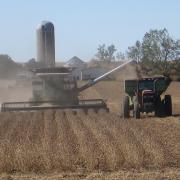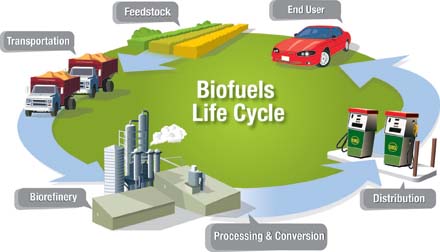Do you know that energy in the oil from oilseed crops, algae, restaurant waste oil, and animal fat can serve as a biodiesel feedstock? This article explores many feedstocks that make oil, which can be used in biodiesel production.
 |
| Harvesting soybeans in Nebraska. Photo: F. John Hay, Extension Educator, University of Nebraska-Lincoln Extension. |





